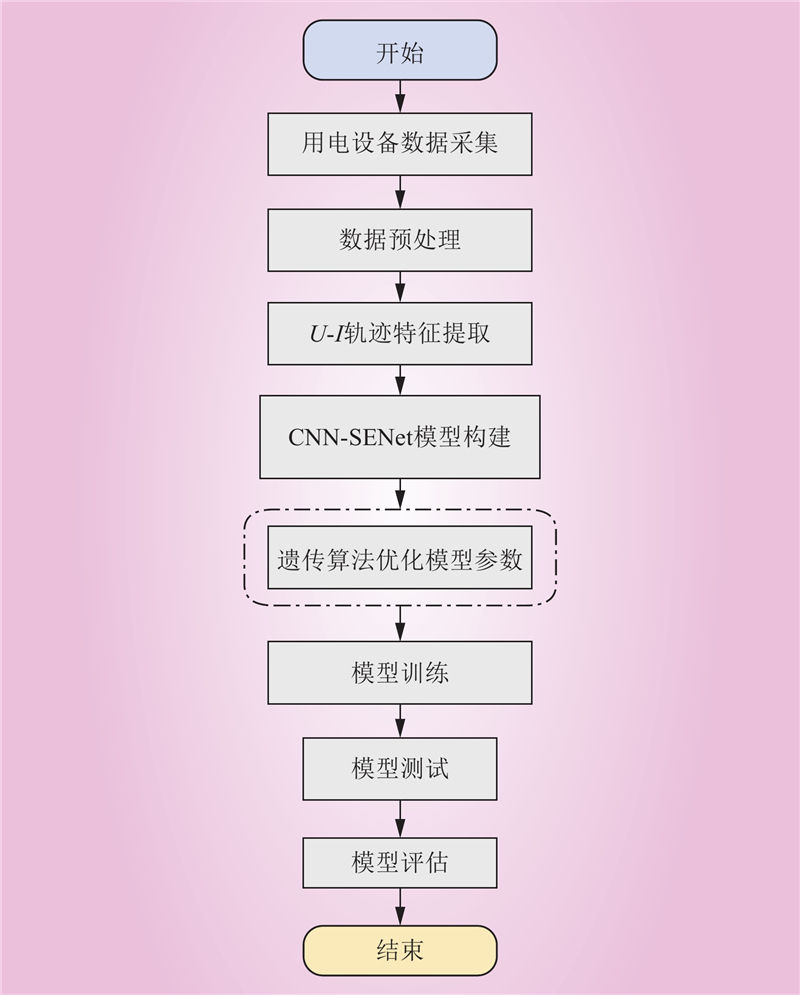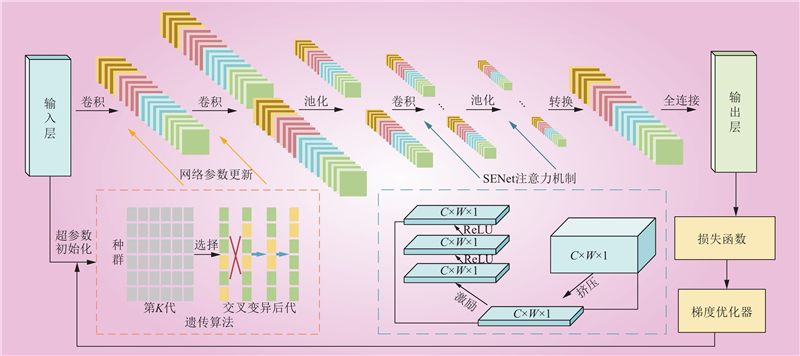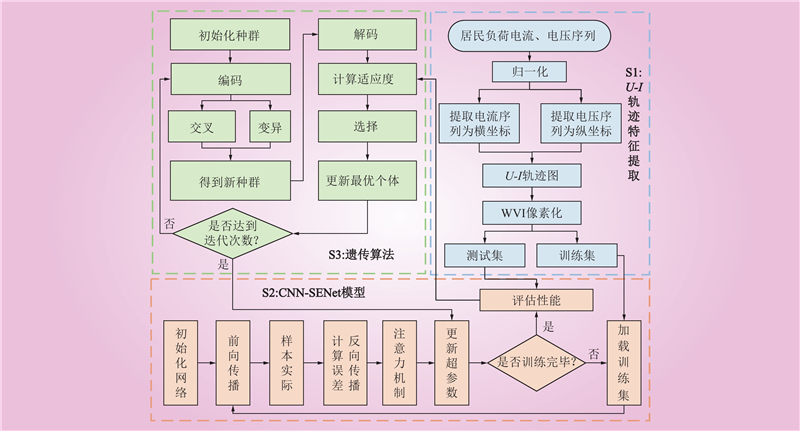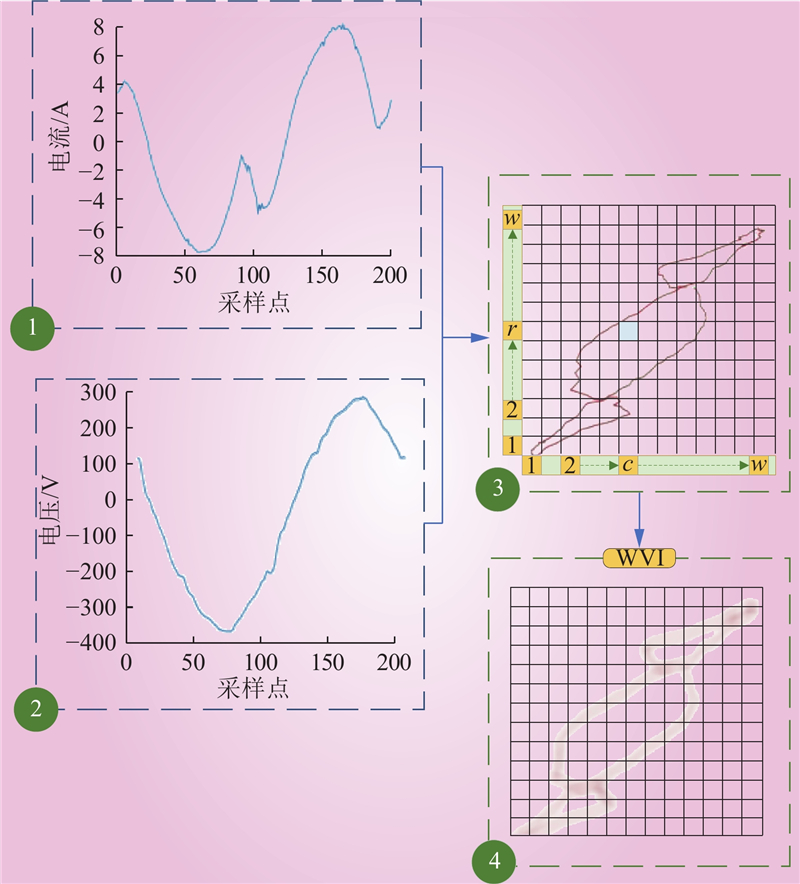| 1 |
冀肖彤, 杨东俊, 方仍存, 等. “双碳” 目标下未来配电网构建思考与展望[J]. 电力建设, 2024, 45 (2): 37- 48.
|
|
JI Xiaotong, YANG Dongjun, FANG Rengcun, et al. Research and prospect of future distribution network construction under dual carbon target[J]. Electric Power Construction, 2024, 45 (2): 37- 48.
|
| 2 |
王金丽, 李丰胜, 解芳, 等. “双碳” 战略背景下新型配电系统技术标准体系[J]. 中国电力, 2023, 56 (5): 22- 31.
|
|
WANG Jinli, LI Fengsheng, XIE Fang, et al. Research on technical standard system of new distribution system under double-carbon strategy[J]. Electric Power, 2023, 56 (5): 22- 31.
|
| 3 |
PAMULAPATI T, MALLIPEDDI R, LEE M. Multi-objective home appliance scheduling with implicit and interactive user satisfaction modelling[J]. Applied energy, 2020, 267, 114690.
DOI
|
| 4 |
HART G W. Nonintrusive appliance load monitoring[J]. Proceedings of the IEEE, 1992, 80 (12): 1870- 1891.
DOI
|
| 5 |
邓旭晖, 陈中, 杨凯, 等. 基于多任务学习卷积网络的非侵入式负荷监测方法[J]. 电力系统自动化, 2023, 47 (8): 189- 197.
DOI
|
|
DENG Xuhui, CHEN Zhong, YANG Kai, et al. Non-intrusive load monitoring method based on multi-task learning convolutional network[J]. Automation of Electric Power Systems, 2023, 47 (8): 189- 197.
DOI
|
| 6 |
孙毅, 李昊洋, 刘耀先, 等. 基于改进隐马尔科夫模型的非侵入式家居负荷识别[J]. 电力建设, 2020, 41 (4): 73- 80.
|
|
SUN Yi, LI Haoyang, LIU Yaoxian, et al. Non-intrusive home-load identification based on improved hidden Markov model[J]. Electric Power Construction, 2020, 41 (4): 73- 80.
|
| 7 |
NIDA U I, SHAHID M S. A low complexity binary-weighted energy disaggregation framework for residential electricity consumption[J]. Energy & Buildings, 2023, 298, 113553.
|
| 8 |
王以良, 周鹏, 叶卫等. 基于金字塔网络的非侵入式负荷辨识及其隐私保护方案[J]. 计算机工程, 2024, 50 (5): 182- 189.
|
|
WANG Yiliang, ZHOU Peng, YE Wei, et al. Non-intrusive load monitoring and its privacy-preserving scheme based on pyramid network[J]. Computer Engineering, 2024, 50 (5): 182- 189.
|
| 9 |
OUZINE J, MARZOUQ M, DOSSE BENNANI S, et al. New hybrid deep learning models for multi-target NILM disaggregation[J]. Energy Efficiency, 2023, 16 (7): 82.
DOI
|
| 10 |
张安安, 庄景泰, 郭红鼎, 等. 结合图半监督与广义回归神经网络的非侵入式海洋平台负荷监测[J]. 电力系统保护与控制, 2020, 48 (7): 85- 91.
|
|
ZHANG Anan, ZHUANG Jingtai, GUO Hongding, et al. Non-intrusive offshore platform load monitoring based on graph-based semi-supervised learning and generalized regression neural networks[J]. Power System Protection and Control, 2020, 48 (7): 85- 91.
|
| 11 |
KONG W C, DONG Z Y, MA J, et al. An extensible approach for non-intrusive load disaggregation with smart meter data[J]. IEEE Transactions on Smart Grid, 2018, 9 (4): 3362- 3372.
DOI
|
| 12 |
孙毅, 张璐, 赵洪磊, 等. 基于动态自适应粒子群算法的非侵入式家居负荷分解方法[J]. 电网技术, 2018, 42 (6): 1819- 1826.
|
|
SUN Yi, ZHANG Lu, ZHAO Honglei, et al. A non-intrusive household load monitoring method based on dynamic adaptive particle swarm optimization algorithm[J]. Power System Technology, 2018, 42 (6): 1819- 1826.
|
| 13 |
刘赛, 刘宇, 高山, 等. 基于多特征目标函数PCA-ILP的非侵入式负荷分解方法[J]. 电力建设, 2020, 41 (8): 1- 8.
DOI
|
|
LIU Sai, LIU Yu, GAO Shan, et al. Non-intrusive load monitoring method based on PCA-ILP considering multi-feature objective function[J]. Electric Power Construction, 2020, 41 (8): 1- 8.
DOI
|
| 14 |
HU S, YUAN G, HU K, LIU C, WU M. Non-intrusive load identification method based on KPCA-IGWO-RF[J]. Energies, 2023, 16 (12): 4805.
|
| 15 |
仝瑞宁, 李鹏, 郎恂, 等. 基于Fisher主元分析和核极限学习机的非侵入式电力负荷辨识模型[J]. 电力建设, 2021, 42 (2): 85- 92.
DOI
|
|
TONG Ruining, LI Peng, LANG Xun, et al. Non-intrusive power load identification model based on FPCA and KELM[J]. Electric Power Construction, 2021, 42 (2): 85- 92.
DOI
|
| 16 |
庄卫金, 张鸿, 方国权, 等. 基于设备运行状态挖掘的非侵入式负荷分解方法[J]. 电力建设, 2020, 41 (8): 9- 16.
DOI
|
|
ZHUANG Weijin, ZHANG Hong, FANG Guoquan, et al. Non-intrusive load disaggregation method based on the mining of equipment operating states[J]. Electric Power Construction, 2020, 41 (8): 9- 16.
DOI
|
| 17 |
徐青山, 娄藕蝶, 郑爱霞, 等. 基于近邻传播聚类和遗传优化的非侵入式负荷分解方法[J]. 电工技术学报, 2018, 33 (16): 3868- 3878.
|
|
XU Qingshan, LOU Oudie, ZHENG Aixia, et al. A non-intrusive load decomposition method based on affinity propagation and genetic algorithm optimization[J]. Transactions of China Electrotechnical Society, 2018, 33 (16): 3868- 3878.
|
| 18 |
MEI H W, LIU Y P, CAO W B, et al. A mother-son model for multi-objective non-invasive load monitoring[J]. Energy & Buildings, 2023, 300, 113669.
|
| 19 |
刘一铭, 李惠民, 王乐挺, 等. 基于卷积神经网络的非侵入式负荷监测方法[J]. 电测与仪表, 2022, 59 (1): 148- 154.
|
|
LIU Yiming, LI Huimin, WANG Leting, et al. Non-intrusive load monitoring method based on convolutional neural network[J]. Electrical Measurement & Instrumentation, 2022, 59 (1): 148- 154.
|
| 20 |
郭红霞, 陆进威, 杨苹, 等. 非侵入式负荷监测关键技术问题研究综述[J]. 电力自动化设备, 2021, 41 (1): 135- 146.
|
|
GUO Hongxia, LU Jinwei, YANG Ping, et al. Review on key techniques of non-intrusive load monitoring[J]. Electric Power Automation Equipment, 2021, 41 (1): 135- 146.
|
| 21 |
严萌, 于雅雯, 王玲静, 等. 基于多特征联合稀疏表达的SOM-K-means非侵入负荷辨识[J]. 电力建设, 2023, 44 (5): 61- 71.
DOI
|
|
YAN Meng, YU Yawen, WANG Lingjing, et al. SOM-K-means non-intrusive load identification based on multi feature joint sparse expression[J]. Electric Power Construction, 2023, 44 (5): 61- 71.
DOI
|
| 22 |
孔志伟. 面向家庭用户的非侵入式负荷监测方法研究[D]. 济南: 山东建筑大学, 2023.
|
|
KONG Zhiwei. Research on non-intrusive load monitoring method for household users[D]. Jinan: Shandong Jianzhu University, 2023.
|
| 23 |
鲍海波, 杨舒惠, 陈子民, 等. 事件检测类非侵入式负荷监测算法综述[J]. 电力系统自动化, 2023, 47 (13): 94- 109.
DOI
|
|
BAO Haibo, YANG Shuhui, CHEN Zimin, et al. Review on event-inspection based non-intrusive load monitoring algorithms[J]. Automation of Electric Power Systems, 2023, 47 (13): 94- 109.
DOI
|
| 24 |
陈池瑶, 苗世洪, 殷浩然, 等. 基于注意力机制-卷积神经网络的配电网单相接地故障选线方法[J]. 电力建设, 2023, 44 (4): 82- 93.
DOI
|
|
CHEN Chiyao, MIAO Shihong, YIN Haoran, et al. Single-phase grounding-fault line selection method based on attention mechanism-convolution neural network for distribution network[J]. Electric Power Construction, 2023, 44 (4): 82- 93.
DOI
|
| 25 |
KONG Z Q, TANG B P, DENG L, et al. Condition monitoring of wind turbines based on spatio-temporal fusion of SCADA data by convolutional neural networks and gated recurrent units[J]. Renewable Energy, 2020, 146, 760- 768.
DOI
|
| 26 |
ZAI Z P, ZHAO S, ZHANG Z J, et al. Non-intrusive load monitoring based on the combination of gate-transformer and CNN[J]. Electronics, 2023, 12(13).
|
| 27 |
张晓萱, 薛松, 许野, 等. 考虑可调节负荷减碳降碳价值的需求响应运行决策模型[J]. 中国电力, 2024, 57 (11): 151- 160.
|
|
ZHANG Xiaoxuan, XUE Song, XU Ye, et al. Operational decision model for demand response considering carbon reduction value of adjustable loads[J]. Electric Power, 2024, 57 (11): 151- 160.
|
| 28 |
DE BAETS L, RUYSSINCK J, DEVELDER C, et al. Appliance classification using VI trajectories and convolutional neural networks[J]. Energy and Buildings, 2018, 158, 32- 36.
DOI
|
| 29 |
ALTRABALSI H, LIAO J, STANKOVIC L, et al. A low-complexity energy disaggregation method: performance and robustness[C]//2014 IEEE Symposium on Computational Intelligence Applications in Smart Grid (CIASG). Orlando, FL, USA. IEEE, 2014: 1–8.
|







